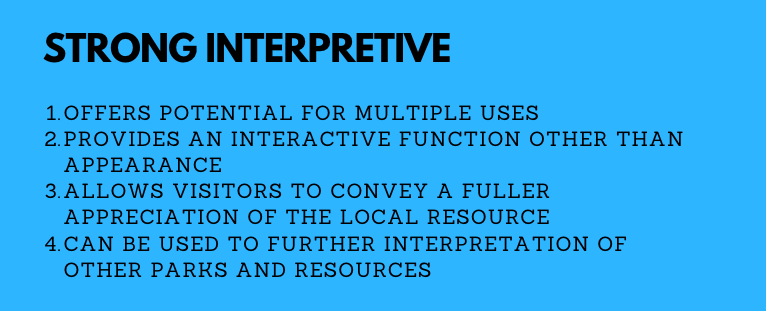During a visit to a National Park last summer, I overheard a family refer to the products in the park store as “weak.” Looking at the shelves filled with plastic mementos and affixed logo items I knew what they meant, but still, I politely inquired.
The family had attempted to find products that were emotionally meaningful instead they found trinkets. Such products did not represent the visit they had just experienced. Over the past several days the family had shared a rare extended weekend together in one of America’s most beautiful locations. During their last hour in the park, they wanted to buy something that helped “connect” them to their enjoyable family experience, but they found nothing that expressed a strong emotional connection. Their final moments in the park would end on a lackluster note. Unfortunately, many parks or nature-related stores do not understand why customers buy.
A park store should not sell products; it should sell benefits.
Customers buy benefits
Park store customers seek benefits. Another way of saying this: customers do not buy products; they buy the benefits they receive from the products. Examples:
Kids do not buy plush animal toys; they buy companionship.
People do not buy books; they buy entertainment/knowledge.
People do not buy a whistle; they buy safety.
People do not buy annual park passes; they buy convenience.
People do not buy jackets; they buy warmth.
All products in the nature store, or at least every product group, need to be benefit-assessed.
The next step is to determine how these benefits add up to strengthen the store, extend interpretive programs, and benefit customers. Classify your product’s interpretive value as ‘weak’, ‘medium,’ or ‘strong.’

Example: Have you ever been to a park concessionaire, or park association store, and seen an entire shelf of coffee mugs? While a mug might be used for drinking, its basic use is for a single purpose. Other examples of weak products are postcards, magnets, stickers, posters, t-shirts, and clothing items.
Weak benefit products are generally impulse-buy items that do not engage the user beyond the act of purchasing them. Too many weak items in your store (greater than 50% of inventory) do not serve the mission of your organization.
Are weak benefit products bad? No, they serve a purpose, but do you want your store to offer only products that offer only a single benefit? You can do better. A targeted question to ask: How could this product help a person to better understand my resource (park, natural area, etc.)? How can it help them to be creative?
Your job as a non-profit marketer is to find how you can differentiate your product (natural area, park, watershed, historical site, etc.) within the mind of the customer. You need to provide more products that are medium and strong.

The hallmark of a medium-strength product is the ability to engage the user and better appreciate the local resources, parks, natural areas, etc.
Examples: Water bottles, walking sticks, local guidebooks, and plush animal puppets. The more sustainably sourced these are, the stronger they will be.

Examples of strong products: Regional/park guidebooks, maps, field guides, and items that support interpretive goals. Another example is a backpack utilized in children’s programs, used as a ” checkout pack” which allows families to borrow a daypack from the nature store to use while exploring the park. When returned the family is offered a significant discount at the nature store to help with a sale.
The sign of a strong product is its ability to alter perceptions and continually help the user to be creative.
Strive for a weak product inventory of 40% and a combined medium/strong inventory of 60%. Remember, products do not sell themselves, the benefits of the product do.
